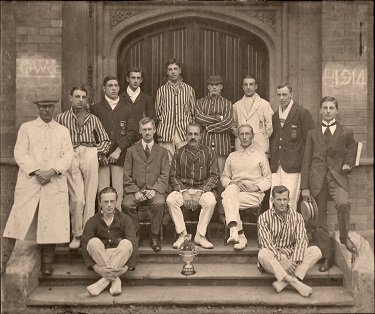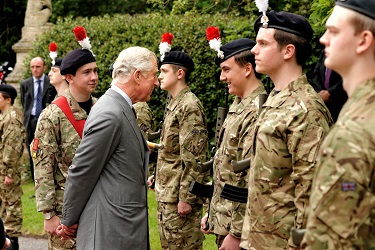The House system at Warwick School
The House System at Warwick School started in 1897, when the houses were imaginatively labelled A, B, C and D. D was for day boys, and A, B and C were parallel divisions of School House, for the boarders. School House had existed since the move to the current site in 1879, and Junior House from 1889 (now called Way House). In 1902 most of the houses were re-named after their then house-masters: Liddell’s, Davies’, Tomas’, Sill’s and Town. These names didn’t last long, either, because all the staff were sacked when the school went bankrupt in 1906. By the 1920s, the modern names started to be used, many of them based on the family names of the Earls of Warwick.
School
School House, the oldest house in the school, was, for about 100 years, exclusively reserved for boarders. This is because they lived at school, and the house was (initially at least) a private business run by each headmaster, who acted as housemaster, for profit. H. S. Pyne certainly found these profits to be considerable. To even up numbers in the 1980s and subsequently, day-boys were placed in School House as well.
Brooke
Robert Greville, 2nd Baron Brooke (1607 – 1643) was an English Civil War Roundhead General, and owner of Warwick Castle. In 1642 he gained the victory of Kineton. He took Stratford-upon-Avon in February, 1643 and was killed shortly afterwards besieging Lichfield Cathedral on 2nd March. He was reportedly shot by a sniper (a concealed person who fired at him with a rifle) and many consider him to be the first recorded victim of sniper fire.
Leycester
In 1564 the Earldom of Leycester was re-created for Queen Elizabeth I's favourite, Robert Dudley. Since Dudley died without heirs, the title became extinct again at his death. He was the younger brother of the Earl of Warwick, and visited Warwick in 1571 in order to found a hospital – which still exists as a home for retired military personnel in the form of the Lord Leycester Hospital. He and his wife Lettice have a splendid tomb in the Beauchamp Chantry of St Mary’s Church, Warwick.
Guy
Guy of Warwick is a legendary English hero of Romance popular in England and France from the 13th to 17th centuries. The core of the legend is that Guy falls in love with the lady Felice ("Happiness"), who is of much higher social standing. In order to wed Felice he must prove his valour in chivalric adventures and become a knight; in order to do this he travels widely, battling fantastic monsters such as dragons, giants, a Dun Cow and great boars. He returns and weds Felice but soon, full of remorse for his violent past, he leaves on a pilgrimage to the Holy Land; later he returns privately and lives out his long life as a hermit (according to local legend in a cave overlooking the River Avon, situated at Guys Cliffe, Warwick). Incidentally, the current Earl of Warwick (born 1957) is called Guy David Greville.
Oken
Thomas Oken was a rich Warwick merchant who died in 1573. The charity which he founded in 1571 still exists, and for several hundred years was used to supplement the salary of the headmaster of the King’s School, Warwick, which became Warwick School. His brass memorial plaque, and treasure chest, are on display in St Mary’s Church, Warwick. Oken House was founded in 2009 in order to cater for increased numbers of pupils in the school.
Greville
Francis Greville, 1st Earl of Warwick KT (10 October 1719 – 8 July 1773), was known as Lord Brooke from 1727 to 1746 and Earl Brooke from 1746. He inherited Warwick Castle and the title of Baron Brooke from his father in 1727. He was created Earl Brooke, of Warwick Castle, on 7 July 1746, and became Lord Lieutenant of Warwickshire in 1749. He became a Knight of the Thistle in 1743. In 1759, he petitioned for the title Earl of Warwick when the last Earl of Warwick from the Rich family died. Francis' petition was granted, and Warwick Castle was once again held by the Earls of Warwick.
Tudor
King Henry VIII (born Henry Tudor in 1491, died in 1547) was King of England from 1509 until his death. Henry was the second Tudor monarch, succeeding his father, Henry VII. Various properties in Warwick were surrendered to the king before 1545, but the townspeople obtained a grant for the preservation of the school in 1545, which Henry VIII re-founded and re-named “The King’s New School of Warwick”. The school kept the name “The King’s School, Warwick” for the next 450 years or so.
G. N. Frykman (Warwick School Archivist)
February 2017
























